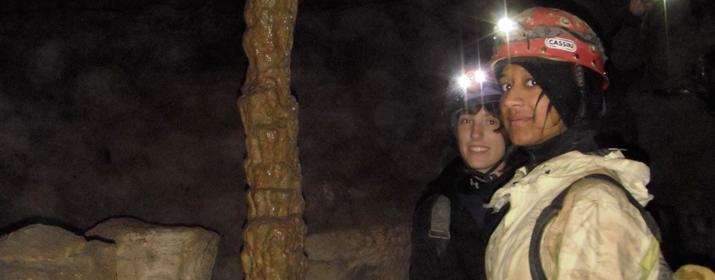

M.S. in Geological Sciences (Thesis)
- About the M.S. in Geological Sciences (thesis)
- Admissions Requirements
- Degree Requirements and General Regulations
- Expectations
- Graduate Advising
- Research and Teaching Assistantships
- About the Master's Thesis
- Thesis requirements for the M.S. degree
- Sample thesis proposal title page [PDF]
Online M.S. in Geological Sciences (Non-Thesis)
Graduate Courses
About the Geological Sciences Graduate Program
Graduate Chair: Dr. Keith Milam
The Earth and Environmental Geosciences Department welcomes all qualified applicants to its graduate master's degree programs. Applicants should possess an undergraduate degree in geology or an allied natural or physical science, such as biology, chemistry, physics, mathematics, or engineering.
The Earth and Environmental Geosciences faculty collaborates across three research clusters:
- Solid Earth and Planetary Dynamics: This includes planetary geology, geophysics, structure, mineralogy, petrology, and additional hard-rock disciplines.
- Sedimentary Geology and Paleobiology: This includes biological and ecological problems in the sedimentary record, paleobiogeographic modeling, evolutionary paleobiology, ichnology, sedimentation, stratigraphy, and additional soft-rock topics.
- Environmental and Surficial Processes: This includes applied and basic geochemistry, applied hydrogeology, surface and groundwater remediation, rivers and flooding, bedrock stream processes, paleoclimatology, and cave development.
A master's degree requires at least six letter-graded graduate-level courses and the completion of a master's thesis. One of the six courses must be Geology 5050. This course, Statistical Methods in Geology, is required of all graduate students.
General information for the prospective and beginning graduate students are available in the Ohio University Graduate Catalog. Additional information on undergraduate curricula and courses is available in the Ohio University Undergraduate Catalog. The student is responsible for knowing graduate regulations and for complying with current procedures. The information on this website is intended to complement the above publications with details that are the concern of the graduate students in the Earth and Environmental Geosciences Department. Within the department, further information can be obtained from the Earth and Environmental Geosciences office (Room 316 Clippinger Laboratories) and the Graduate Chair.

